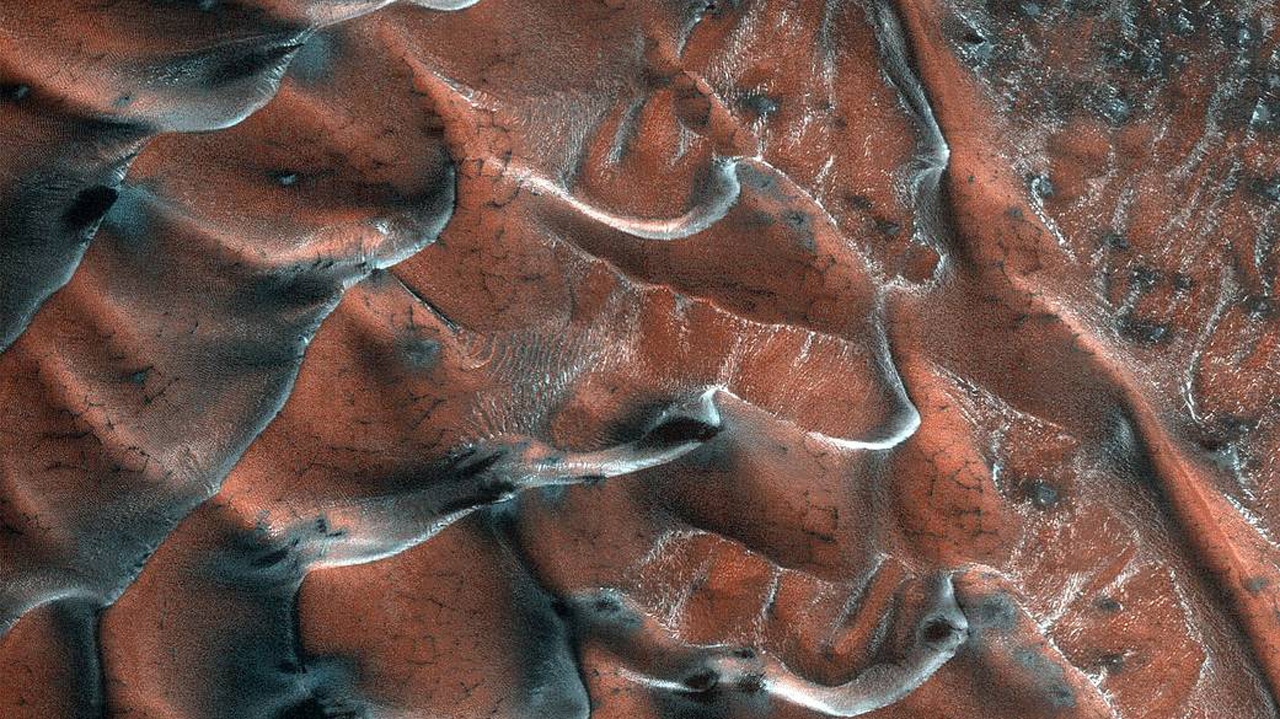
Scientists are particularly interested in the Martian dunes because they represent areas where the surface is changing enough that the same material isn’t getting constantly blasted by the harsh environment.
Martian dunes move at a fraction of the speed of those found on Earth. This suggests how thinner an atmosphere the Red Planet boasts than Earth.
Recently, NASA shared a fantastic photo of Mars’ frosty dunes. In the high-latitudes of the northern plains of Mars, the sand dunes occupy this frosty 5-kilometer diameter crater.
Some dunes have separated from the main field and appear to be climbing up the crater slope and a gully-like form.
A series of dark-toned polygonal patterns indicates the surface of the primary dune field. These patterns may be the result of seasonal frost processes.
Many of the steeper dune slopes, pointing downward, suggest the beginnings of gully formation.
Several textures can be seen on the crater floor. These textures include lobate and striped patterns indicating seasonal melting due to sublimating ice.
The broad downstream movement of materials on the crater slope resembles that of the tiffany slope, except that they are not usually defined by specific alcoves, incised channels, or sedimentary aprons. These are signs of gulli elsewhere on the planet.
Continue reading Sand dunes of Mars may be the result of seasonal frost processes on Tech Explorist.
0 comments:
Post a Comment